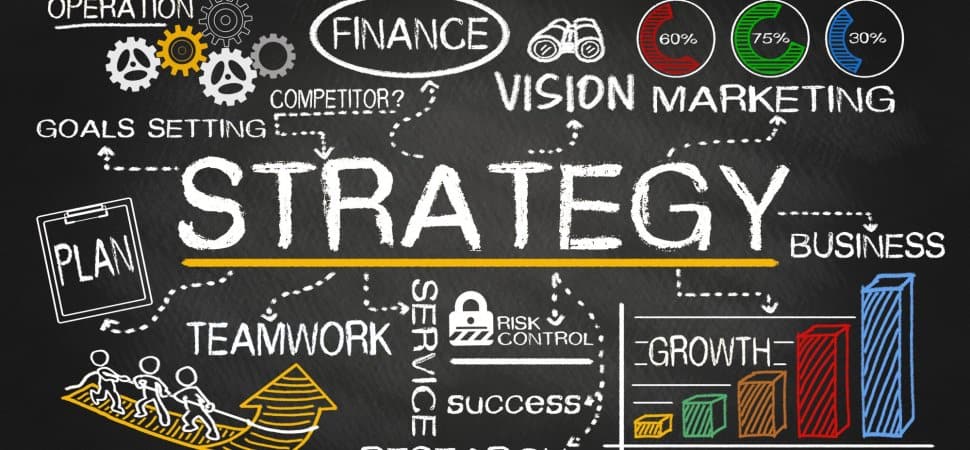What is a Go-to-Market Strategy?
An organization’s go-to-market strategy is an action plan that outlines how it will bring its product to the marketplace, deliver on its key value propositions, satisfy customers and meet revenue generation and profit goals and expectations. The go-to-market strategy answers all of the most important questions that should be posed when bringing the product to market:
- Where is the market for this product?
- Who are the buyers of this product?
- What is the value of this product to the buyer?
- How much should the product cost? What is its value to the buyer?
- How will the product be marketed? How will it be distributed to buyers?
- How will the product be differentiated from its competitors?

Go-to-Market Strategy vs Marketing Strategy - What's the Difference?
On the surface, it seems like the terms “marketing strategy” and “go-to-market strategy” could be used interchangeably, but in fact, there are subtle differences (and big similarities) between the two.
Let’s start with what’s the same: both of these types of strategy cover product pricing, value propositions, marketing channels, and distribution.
Marketing strategy is often associated with the marketing mix, also known as the 4Ps of marketing: product, price, place, and promotion:
- The product aspect deals with product planning, including what features and quality level the product will have, how it will be branded and packaged, what guarantees or warranties will be offered and what products will be included in the product line.
- Marketing strategy for pricing includes price-setting, pricing tactics (in relation to competition, market factors, etc.), rebates and discounts.
- The concept of place in the marketing mix refers to physical (or digital) locations where a consumer will be able to purchase the product. The marketing organization must create a distribution plan for the product that supports its business objectives.
- The final component of the marketing mix, promotion, deals with the selection of advertising channels and the creation of content and materials to promote the product.
Marketing strategy involves communication between the marketing and product development teams, as marketers contribute to the product planning and development process through the collection of user needs and by assessing demand for product features. The promotion of products may also include direct selling, so there is a need for communication about promotions between sales and marketing teams within the organization.
While marketing strategy describes a broad approach to generating marketable products and bringing them to customers, a go-to-market strategy goes slightly deeper into the tactics that will be used to deliver on unique value propositions and establish a competitive advantage in the marketplace.
With a product or service offering already realized, a go-to-market strategy identifies target markets for the product as well as constructing buyer personas for customer segments within the target market and establishing a unique value proposition (UVP) for each buyer persona. The go-to-market strategy also includes decision-making and strategic thinking about product positioning, or how to differentiate the product and brand from its competitors in the marketplace.
Broadly speaking, organizations should think of marketing strategy as a long-term approach to marketing success over time and go-to-market strategy as a tactical outline for a new product launch or for launching an existing product into a new marketplace.

Six Components of a Successful Go-to-Market Strategy
The objective of a go-to-market strategy is to bring a product to the marketplace, win customers and their loyalty and meet revenue and profit targets in the process. An effective go-to-market strategy includes six key components that will inform the marketing and sales tactics used to capture market share.
Markets
The first step to defining your go-to-market strategy is determining the target market for your product. Think about your product or service and the solutions that you provide to your customer’s problems – who can benefit from those solutions? Defining your target market is the first towards identifying your ideal customer and how to market to them.
Customers
To successfully bring a product to market, you need to go beyond understanding your industry or marketplace and start understanding your customers. Here, it helps to drill down to the details and construct elaborate buyer personas based on everything you can learn about your target customer.
What is their job role? What are their most important success indicators? What motivates them? What problem can you help them solve? How do they make purchasing decisions? If there will be several people involved in the purchasing decision, constructing buyer personas for all of them will help you market to the group.
Value Proposition
As you develop customer segmentation, you must clearly delineate your unique value proposition for each unique buyer persona. Building an IT product? How does it benefit IT agents and operators? What about developers and security teams? What about IT managers?
Creating a UVP for each role will help your sales staff position products correctly and emphasize the appropriate features and benefits when interacting with prospects.
Price
Developing a functional and profitable pricing model is a key aspect of marketing a product. A product that is priced incorrectly will fail to meet its revenue and profit expectations, even if it is otherwise marketed successfully. Key considerations for pricing include:
- How should the pricing model work? Should we sell the product, license it, or offer a subscription-based service with value-added features?
- What should the product cost?
- How will our costing compare to our competitors?
- How will our pricing support our business strategy? Are we trying to maximize profit, profit per customer or market share?
Positioning
The goal of effective product positioning is to gain a competitive advantage by differentiating a product from its competitors in the marketplace. Products and services can compete on several dimensions – pricing, customer service, ease-of-use, speed, functionality/features and many more.
Product positioning is all about understanding how your unique feature-set makes your product different and emphasizing the most positive aspects that are different from your competition.
Channels
The final element of a go-to-market strategy is identifying the most profitable marketing and distribution channels for your product. Most marketing channels are either some form of direct selling (you sell products directly to your customers) or selling through intermediaries (you form relationships with agents, wholesalers, and retailers who distribute your products to customers).
Potential channels for promoting your products include traditional media (television, radio, print) as well as digital channels (website, social media, pay-per-click advertising, search engine marketing, etc.)

Leverage Digital Channels in Your Go-to-Market Strategy with Directive Consulting
At Directive Consulting, we’re experts at creating go-to-market strategies that work. We leverage digital marketing channels along with the latest technology in marketing automation and analytics to help you access the right prospects for the right price and secure a strong competitive advantage in your niche.
Contact us for a proposal and we’ll create a customized go-to-market strategy to help you dominate the marketplace.